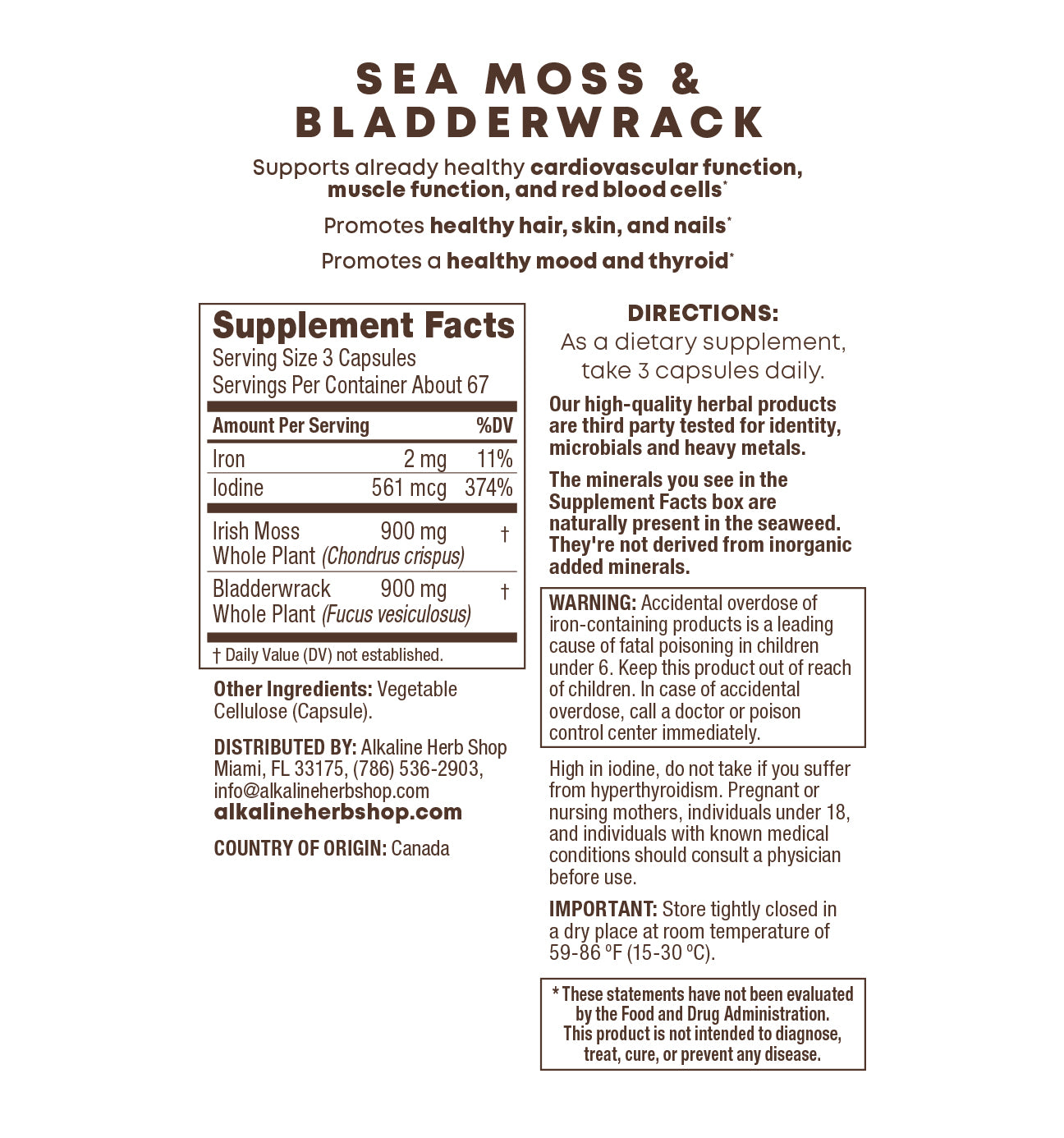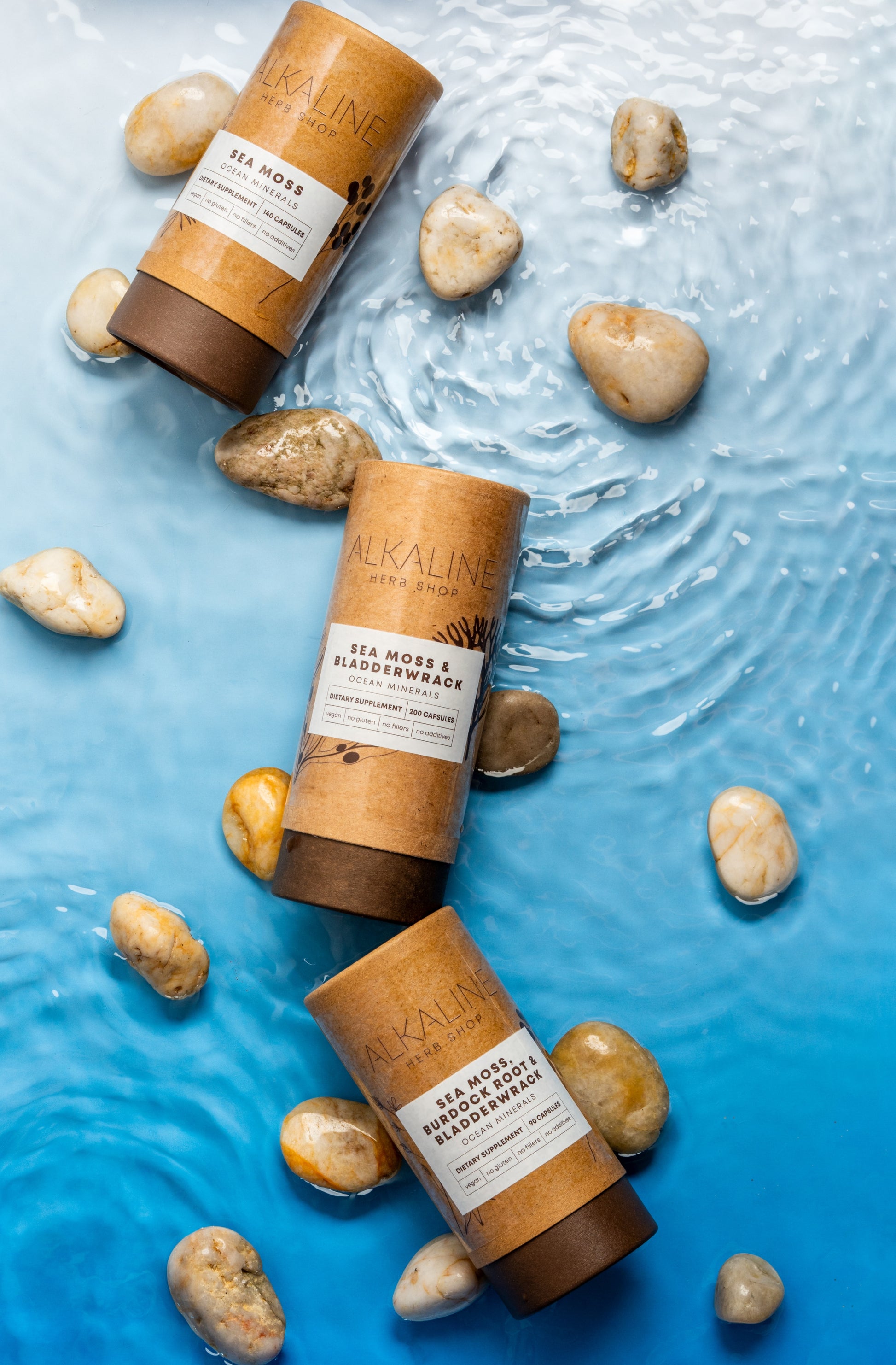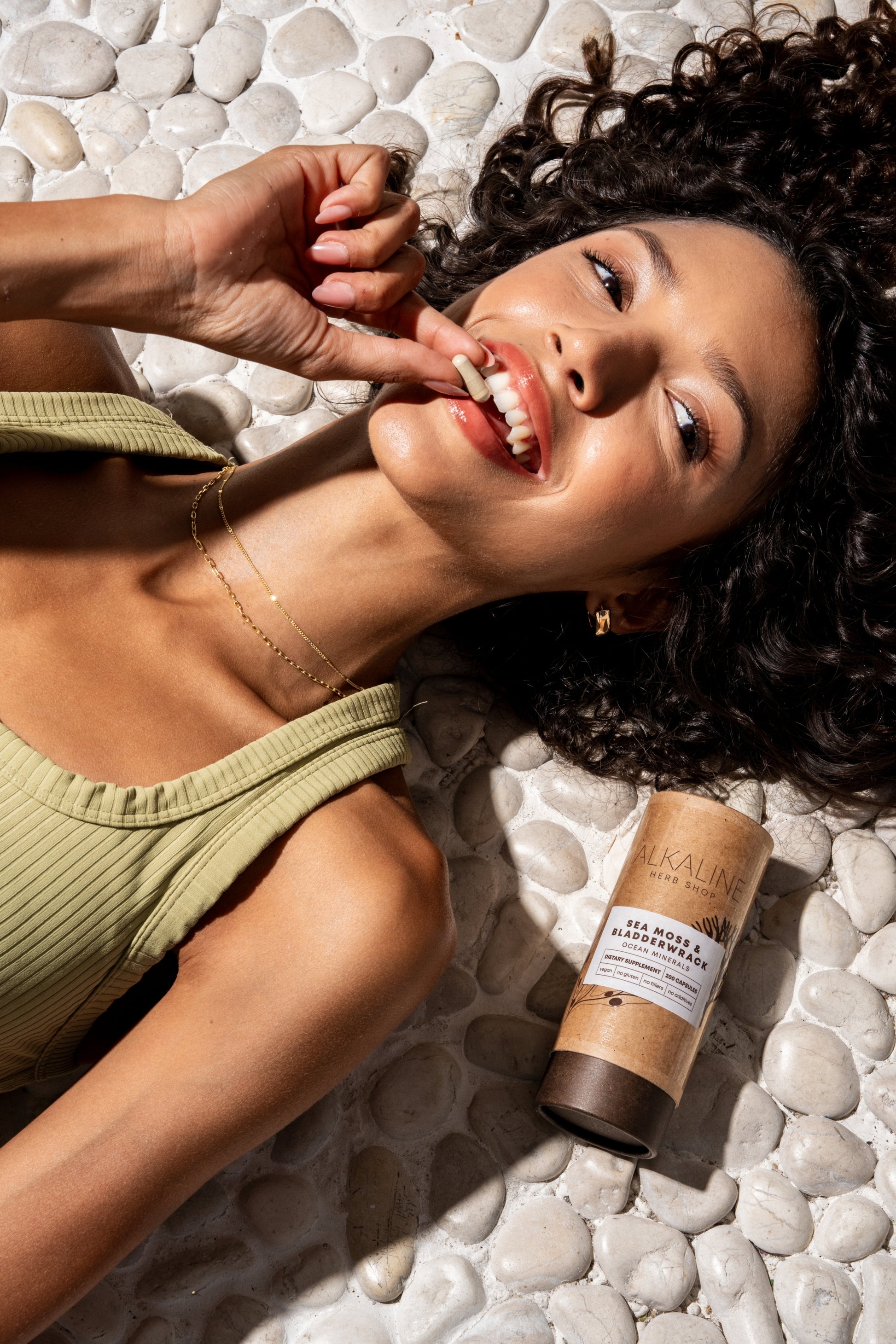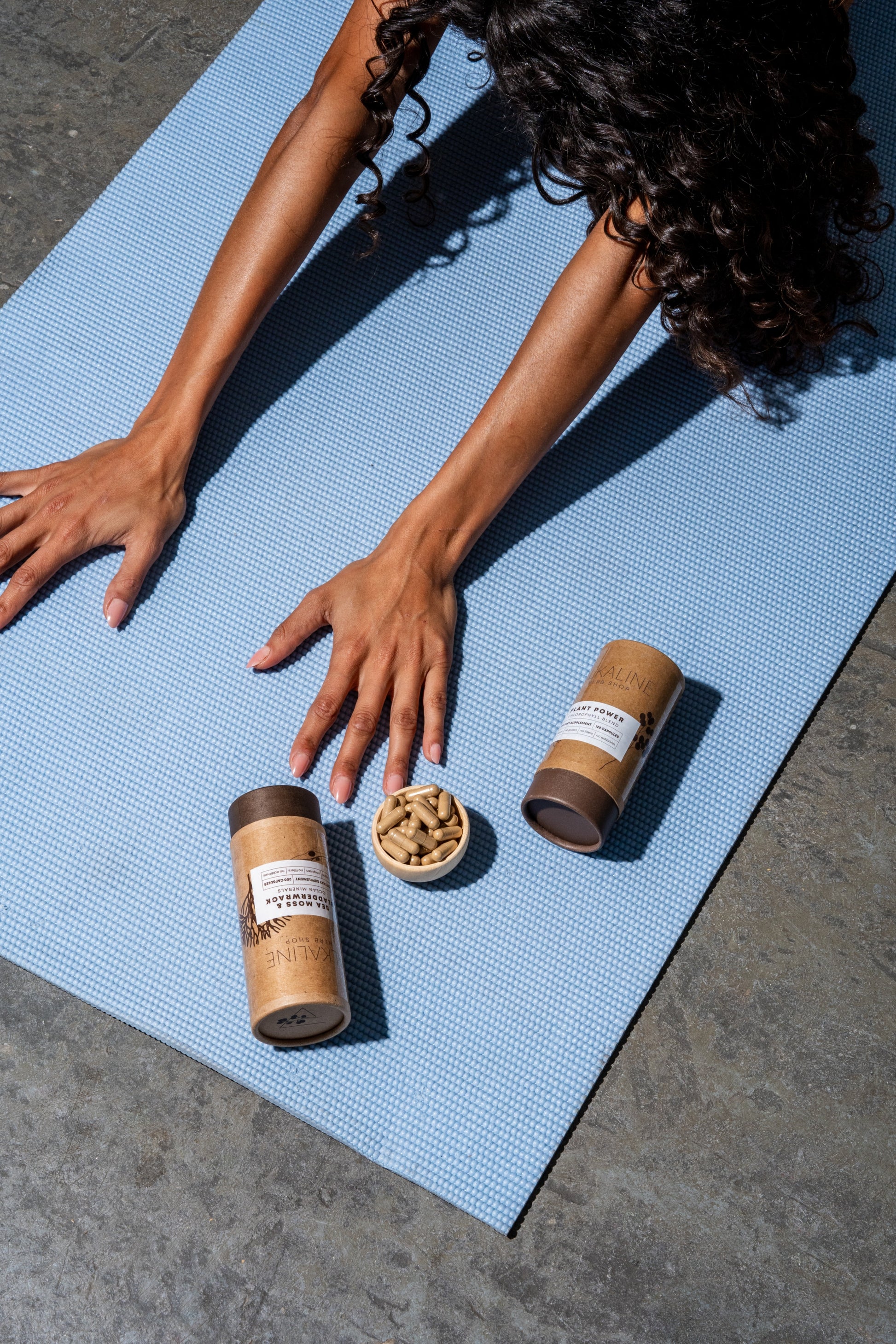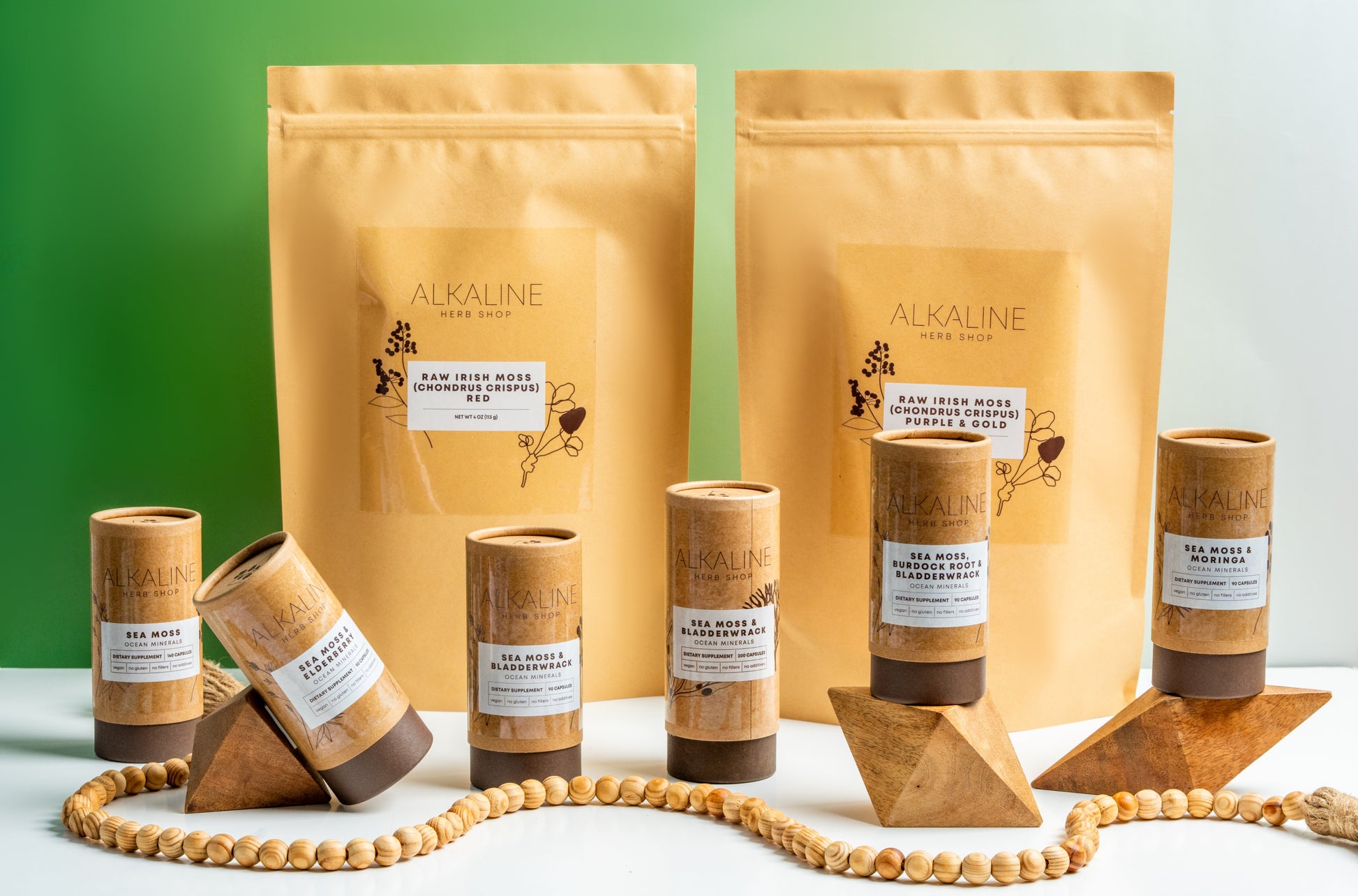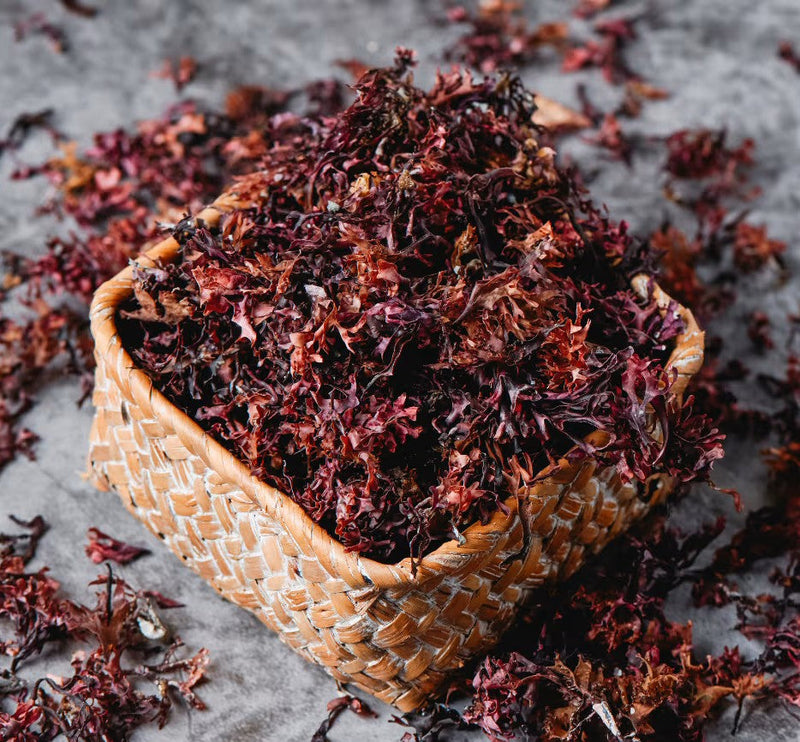Sea Moss & Bladderwrack Supplement 200 Capsules
Sea Moss & Bladderwrack Supplement 200 Capsules
My nails are no longer brittle, and my energy levels have improved so much! I've improved in my workouts and feeling supercharged.
Support already healthy cardiovascular function, muscle function, and red blood cells*
Promotes healthy hair, skin, and nails*
Promotes a healthy mood and thyroid*
 VEGAN
VEGAN
 Non-Gmo
Non-Gmo
 Gluten-Free
Gluten-Free
Couldn't load pickup availability
Our Irish sea moss and bladderwrack capsules provide naturally occurring minerals, including iodine, calcium, magnesium, potassium, and zinc. Each bottle contains 200 vegetable capsules made with wildcrafted Chondrus crispus and bladderwrack.
We use 100% wildcrafted Chondrus crispus and bladderwrack, sustainably harvested from cold, protected ocean waters. Our capsules are third-party tested for identity, heavy metals, and microbial contaminants to help ensure quality and safety. The capsules contain no fillers or artificial additives and are designed to deliver naturally sourced nutrients in a convenient form.
Take 3 capsules daily in the morning as a dietary supplement.
High in iodine. Do not take it if you suffer from hyperthyroidism. Pregnant or nursing mothers, individuals under 18, and individuals with known medical conditions should consult a physician before use.
*These statements have not been evaluated by the Food and Drug Administration. This product is not intended to diagnose, treat, cure, or prevent any disease.
- Processing Time: Orders ship within 1 to 2 business days.
- Refunds: 100% satisfaction guarantee. Contact within 30 days of receipt, return unused portions at your expense, and receive a full refund upon receipt.
- Customs Duty Tax: Pre-paid and covered for most countries.

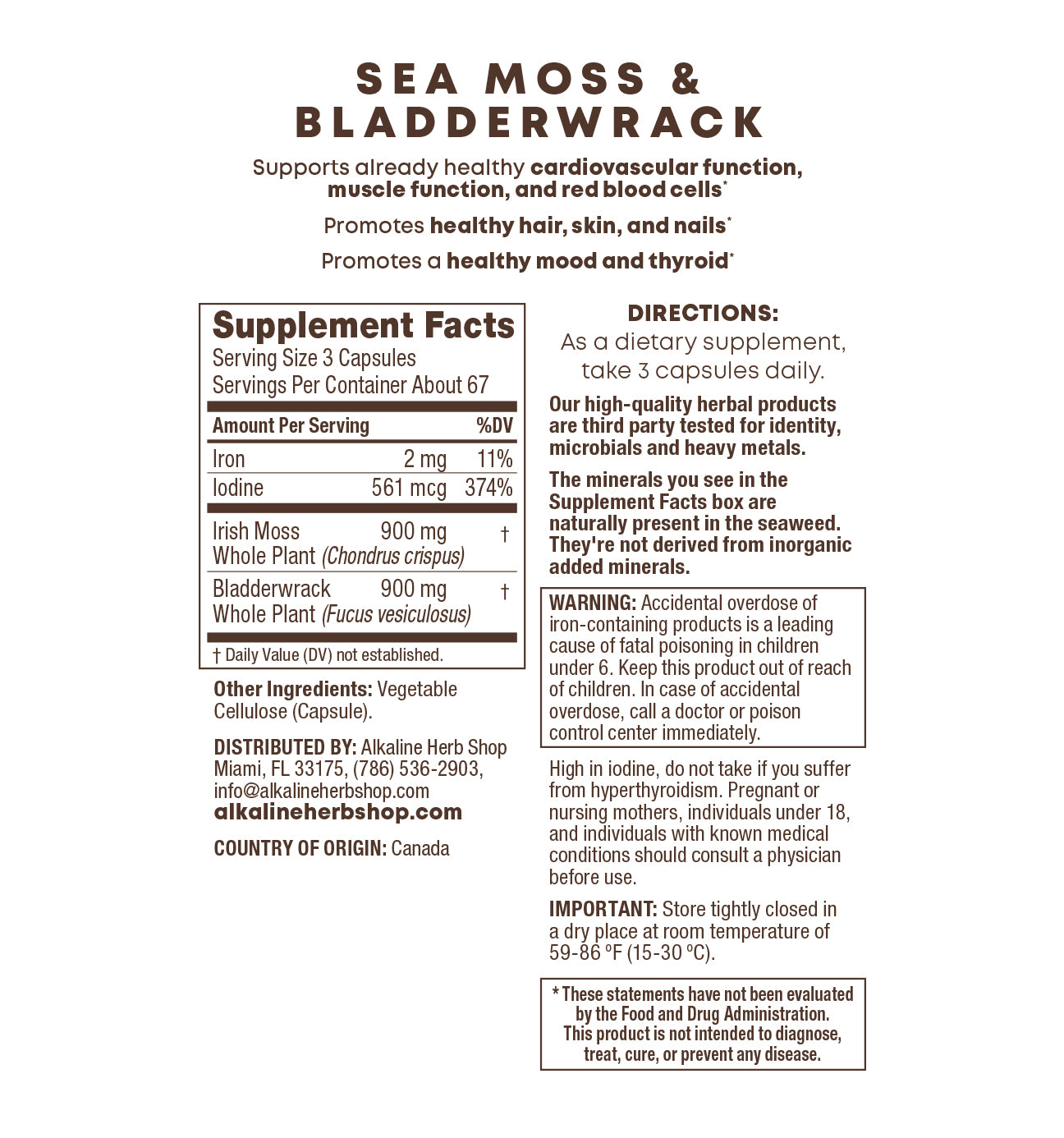
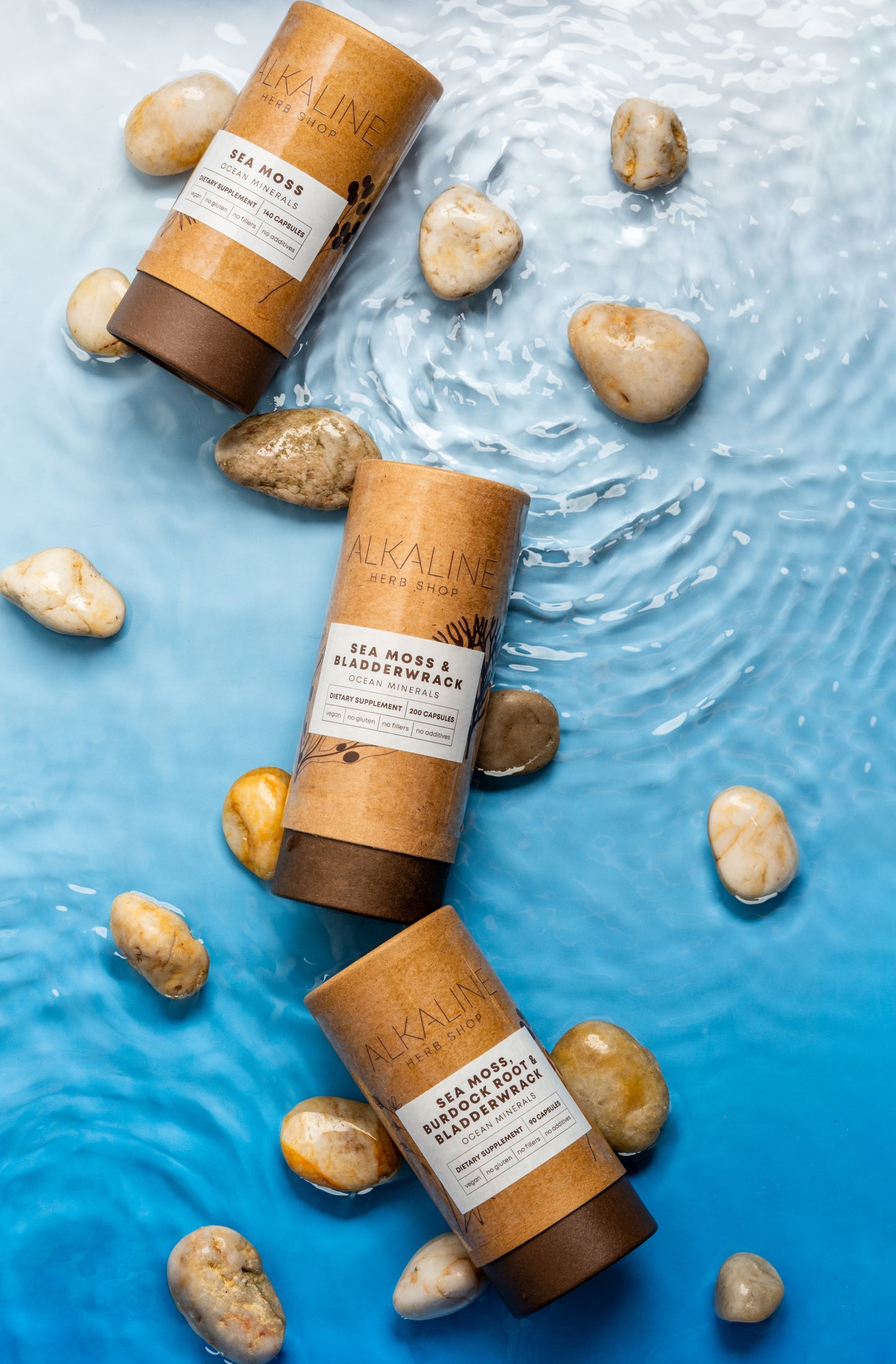
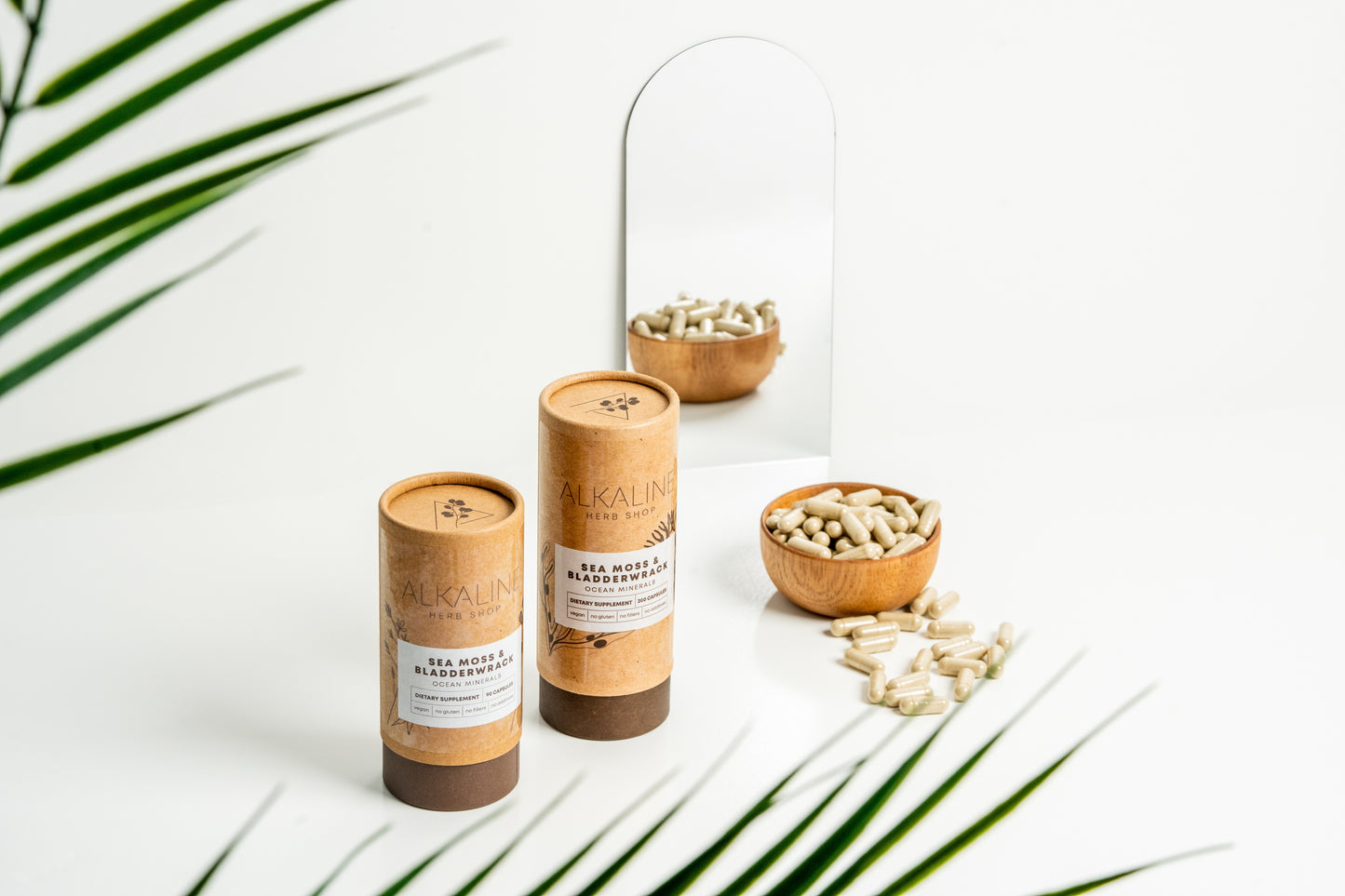

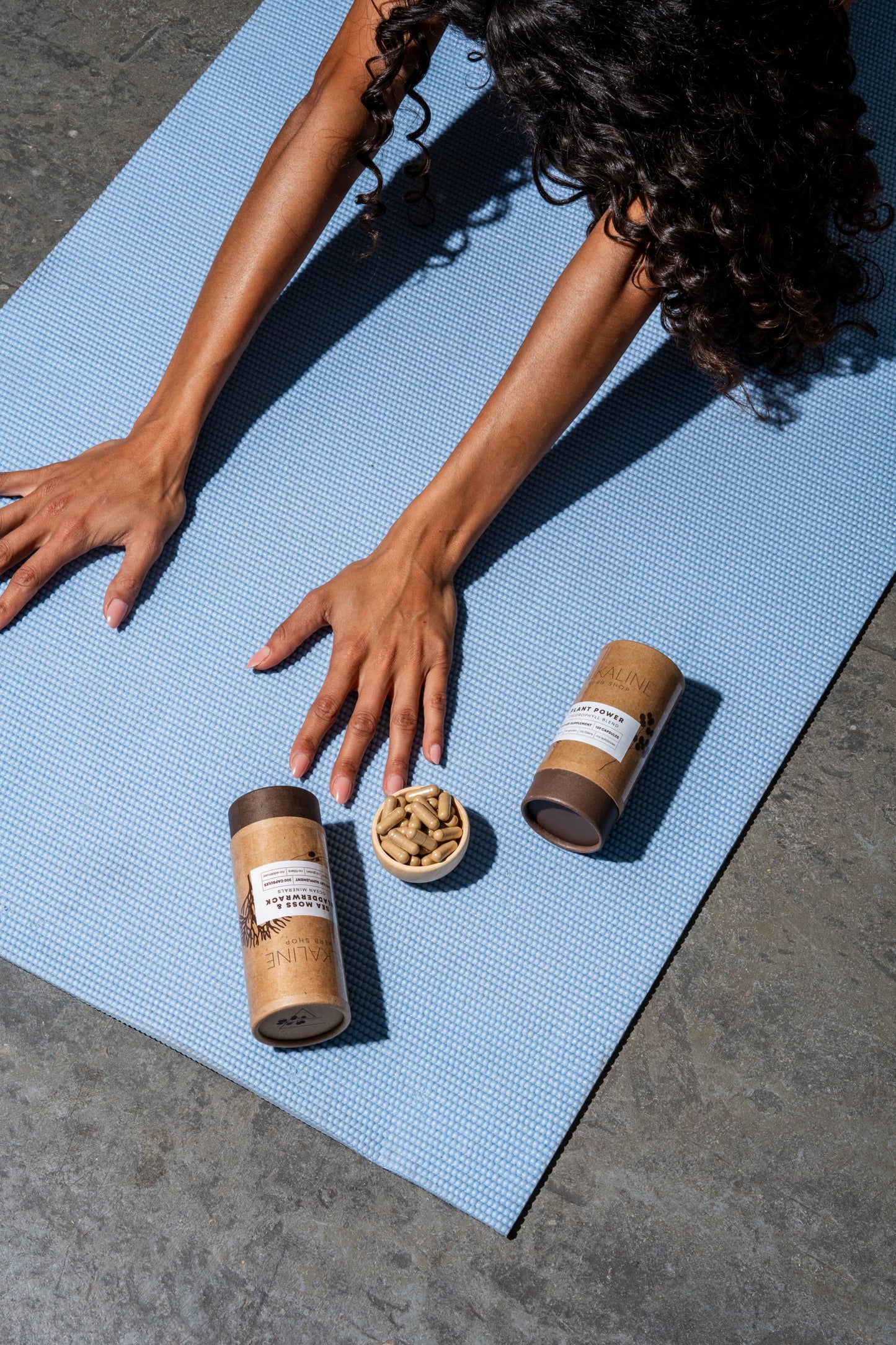

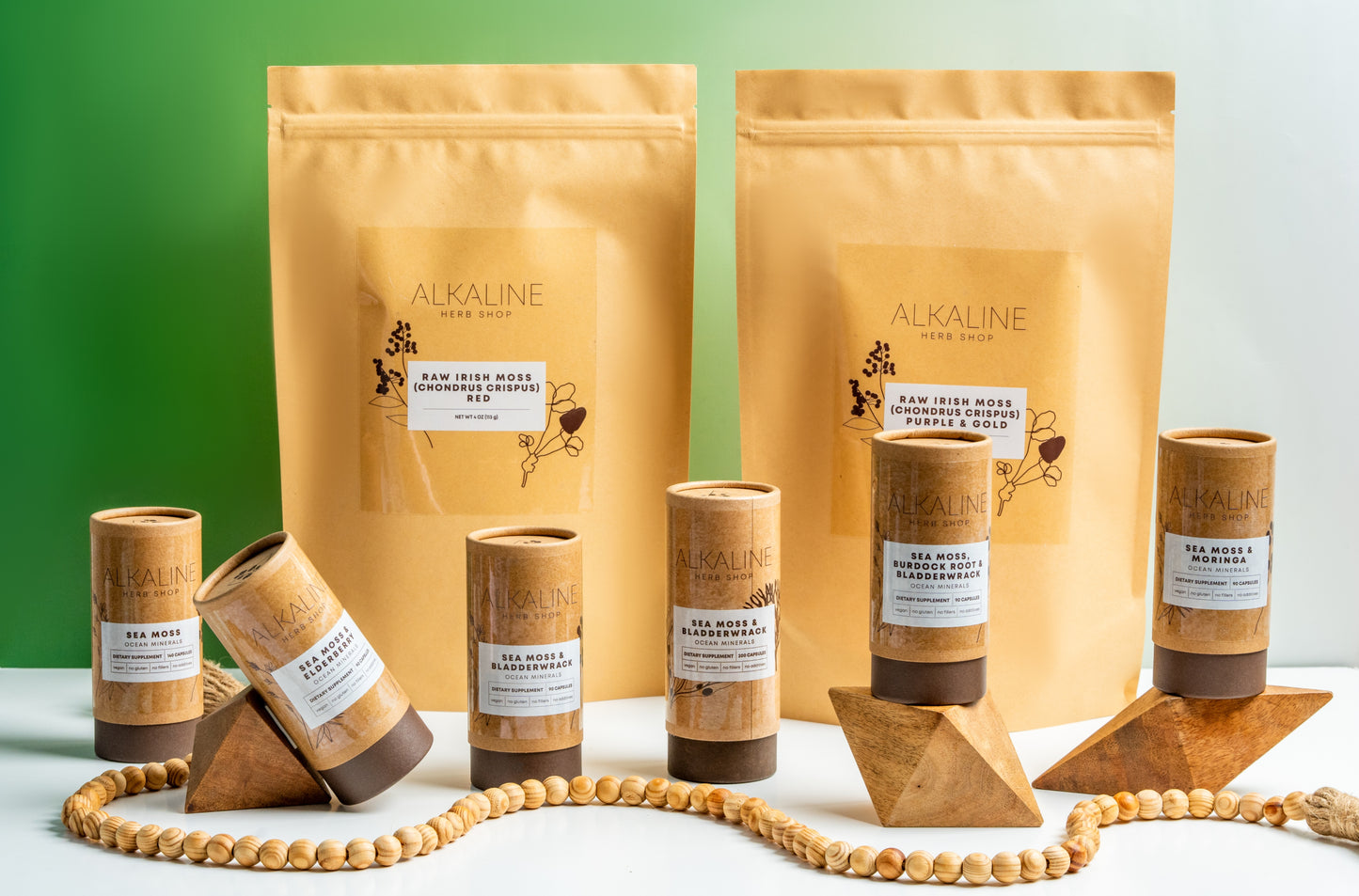
What Social Media Says About Our Sea Moss and Bladderwrack Capsules
100% Wildcrafted Sea Moss and Bladderwrack

Wildcrafted Irish Sea Moss (Chondrus Crispus)
Each serving (3 capsules) contains 900 mg of wildcrafted Irish moss, with 300 mg per capsule. Irish sea moss is a natural source of iodine, calcium, magnesium, and potassium. These minerals support normal thyroid function, muscle and nerve activity, and general wellness.*
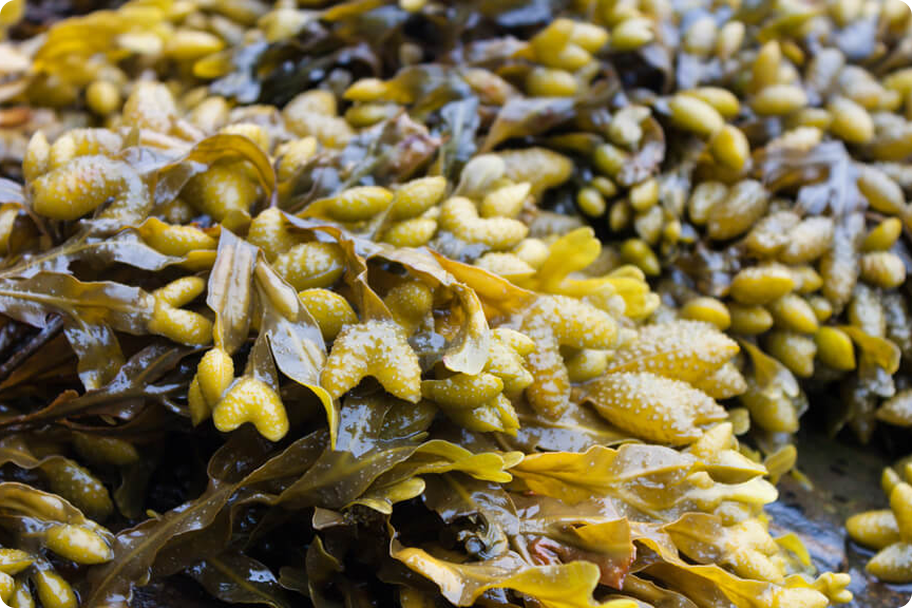
Wildcrafted Bladderwrack (Fucus Vesiculosus)
Each serving (3 capsules) also contains 900 mg of wildcrafted bladderwrack, with 300 mg per capsule. Bladderwrack provides naturally occurring iodine, potassium, calcium, and magnesium. It also contains antioxidants such as polyphenols. Traditionally, it has been used to support metabolic health, thyroid function, digestive comfort, and immune function.*
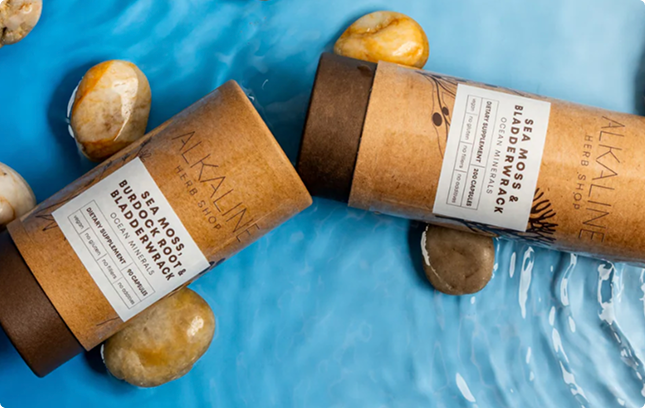
Our Sea Moss and Bladderwrack Supplement is Third Party Tested
We conduct third-party lab tests for heavy metals, identity, and microbials to help ensure the quality and safety of our sea moss and bladderwrack capsules. Because trace metals can be found in many natural foods, we test each batch twice, once upon the raw material arrival and again through an independent third-party lab after encapsulation. This two-step process helps confirm that our products meet our internal quality and safety standards.
We believe in full transparency. Download our third-party test report below.
Health Benefits of Sea Moss and Bladderwrack Supplement Capsules
-

Supports Thyroid Health
Sea moss and bladderwrack are natural sources of iodine, a trace mineral that contributes to the normal production of thyroid hormones. These hormones help support healthy energy metabolism and overall thyroid function.* -

Supports Bone and Joint Health
These botanicals provide naturally occurring minerals such as calcium and magnesium, which contribute to normal bone density, muscle function, and joint support.* -

Supports Skin Health
These seaweeds provide vitamin C, zinc, and iodine, nutrients that support skin integrity, collagen formation, and normal thyroid function, which may influence skin appearance.* -

Supports Immune Function
Naturally occurring zinc and iron in sea moss and bladderwrack contribute to normal immune system activity and oxygen transport throughout the body.* -

Supports Energy and Metabolism
Iodine, iron, and B vitamins found in these seaweeds support normal energy metabolism and red blood cell formation.* Antioxidants in these herbs may help protect cells from oxidative stress.* -

Provides Nutrients that Support Physical Activity
Sea moss and bladderwrack contain magnesium, potassium, iron, and vitamin C, which support muscle function, electrolyte balance, and tissue repair following physical activity.* -
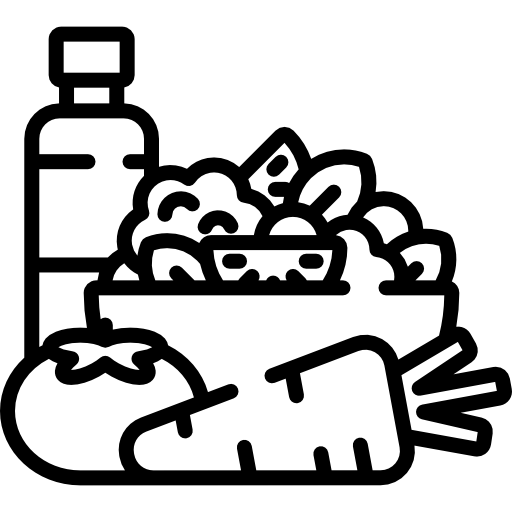
Supports Satiety as Part of a Healthy Diet
Naturally low in calories and containing soluble fiber, these herbs may support feelings of fullness when consumed as part of a balanced diet and active lifestyle.* -

Supports Nutrient Needs for Women’s Bone and Muscle Health
These botanicals provide calcium, magnesium, and potassium, which contribute to normal muscle function and help maintain bone health, especially during times when hormonal changes may affect bone density.* -

Supports Normal Glucose Metabolism
These algae provide soluble fiber, magnesium, and iodine.* Soluble fiber may support healthy digestion, while magnesium contributes to normal insulin and glucose function.* Iodine supports thyroid hormone production, which plays a role in metabolic processes.* -

Supports Circulatory and Heart Health
Sea moss and bladderwrack contain potassium, an electrolyte that supports fluid balance and helps maintain blood pressure already within the normal range.* Potassium also supports normal cardiovascular function when consumed as part of a balanced diet.*

Our Sea Moss and Bladderwrack Supplements Are Free of 12 Harmful Ingredients
Our supplements contain no fillers, additives, or mixing agents, just pure herbs in a veggie capsule. What we leave out of our supplements is just as important as what’s included. You won’t find any of the following 12 ingredients in our supplements - that’s our commitment to quality.
- No Talc
- No Artificial Colors
- No Artificial Flavors
- No EDTA and Derivatives
- No Shellac
- No Magnesium Silicate
- No Pharmaceutical Glaze
- No Titanium Dioxide
- No High-Fructose Corn Syrup
- No Hydrogenated Oils
- No Artificial Sweeteners
- No Artificial Preservatives
Sea Moss and Bladderwrack Provide Naturally Occurring Vitamins and Minerals That Support Health
-
Potassium
Sea moss and bladderwrack are natural sources of potassium, an electrolyte that contributes to normal fluid balance, muscle contraction, and nerve transmission.* -
Iodine
Both algae naturally contain iodine, a trace mineral necessary for the normal production of thyroid hormones, which help regulate metabolism and energy balance.* -
Magnesium
Magnesium supports normal muscle and nerve function, contributes to cardiovascular health, and plays a role in cellular energy production.* -
Iron
Sea moss and bladderwrack provide iron, which supports the normal formation of red blood cells and helps transport oxygen in the body.* -
Calcium
These sea vegetables naturally contain calcium, which helps maintain normal bone and tooth structure and supports nerve signaling and muscle function.* -

B Vitamins (B3, B6, B9)
Naturally present B vitamins support normal energy metabolism, red blood cell formation, and nervous system function.* -

Vitamin C
Vitamin C contributes to immune function, collagen synthesis, and helps enhance the absorption of iron from plant-based sources. It also functions as an antioxidant.* -

Zinc
Zinc plays a role in supporting normal immune function, DNA synthesis, wound healing, and reproductive health.*
Subscribe & Save 15% w/Autoship
Save time and money! Edit, pause, or cancel at any time.
Free Shipping on all US Orders Over $99
Enjoy complimentary shipping on all products.
Customer Satisfaction Guaranteed
We offer a 100% customer satisfaction guarantee.

200 Capsule & 90 Capsule Bottles
Each 200 Capsule Bottle Lasts 2+ Months
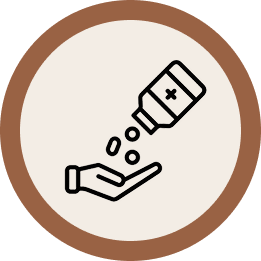
3 Capsules per Day

Resulting in a Healthier You
Ingredients That Make a Difference
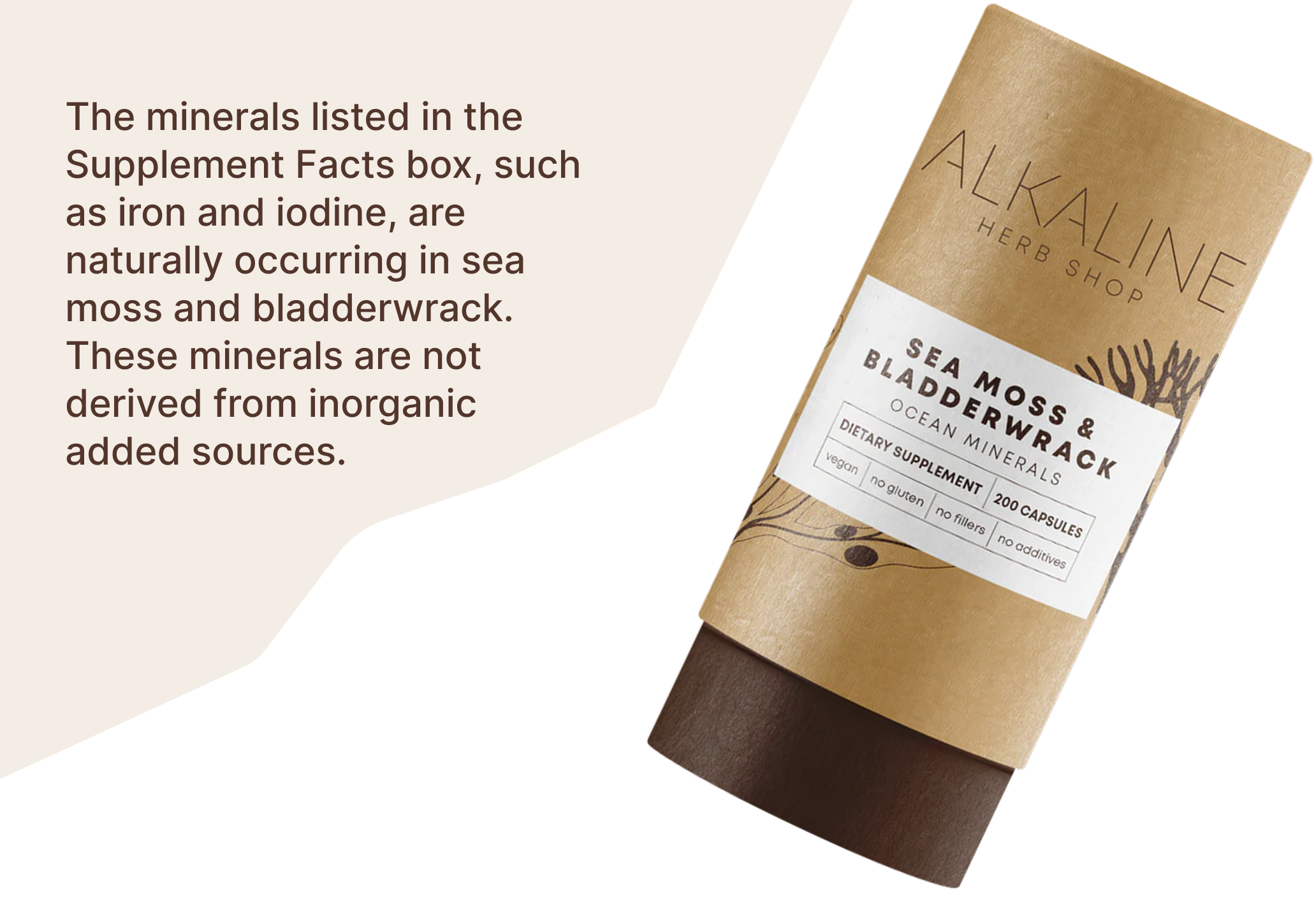
Supplement Facts
|
Serving Size: 3 Capsules Servings Per Container: About 67 |
||
| Amount Per Serving | %DV | |
|---|---|---|
| Iron | 2 mg | 11% |
| Iodine | 561 mcg | 374% |
|
Irish Sea Moss White Plant (Chondrus crispus) |
900 mg | † |
|
Bladderwrack Whole Plant (Fucus vesiculosus) |
900 mg | † |
| † Daily Value (DV) not established. | ||
Other Ingredients: Vegetable Cellulose (Capsule).
We use 100% Chondrus Crispus sea moss, the most sought-after sea moss sourced from protected, pristine waters.
See how we compare to the competition.



Competitors
-
Never sourced from China

-
Always wildcrafted

-
3rd party tested with transparent results

-
No fillers / additives

-
Tested for potency pre-purchase

-
Sourced from protected waters



We use 100% Chondrus Crispus sea moss, the most sought-after sea moss sourced from protected, pristine waters.
See how we compare to the competition.

Competitors
-
Never sourced from China

-
Always wildcrafted

-
3rd party tested with transparent results

-
No fillers / additives

-
Tested for potency pre-purchase

-
Sourced from protected waters







